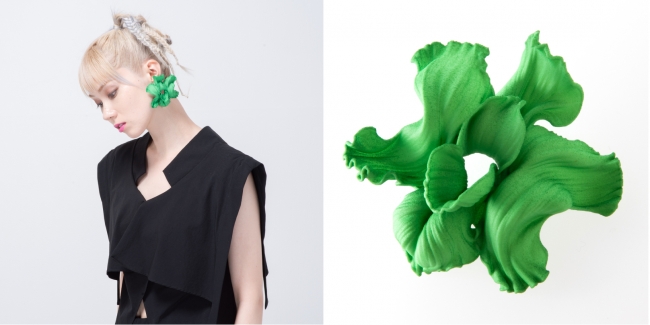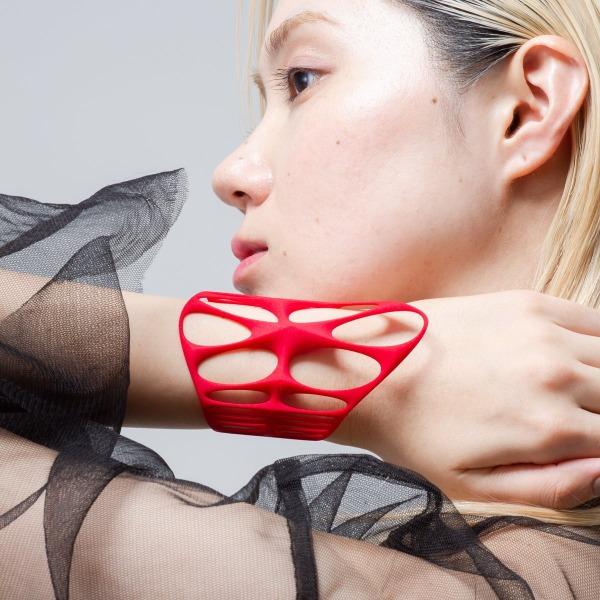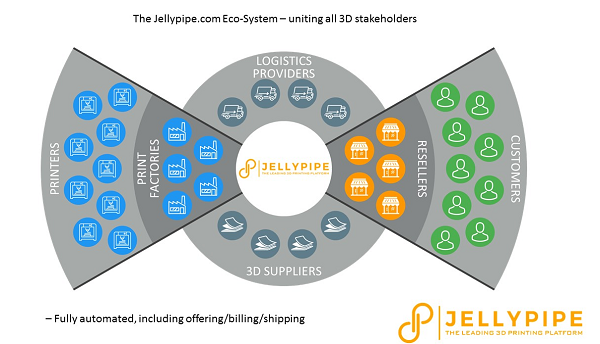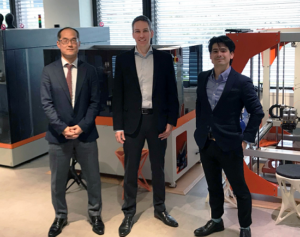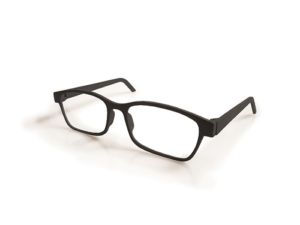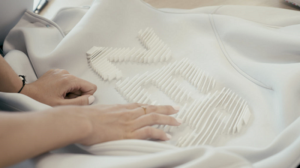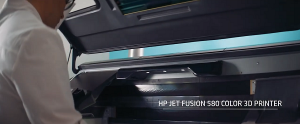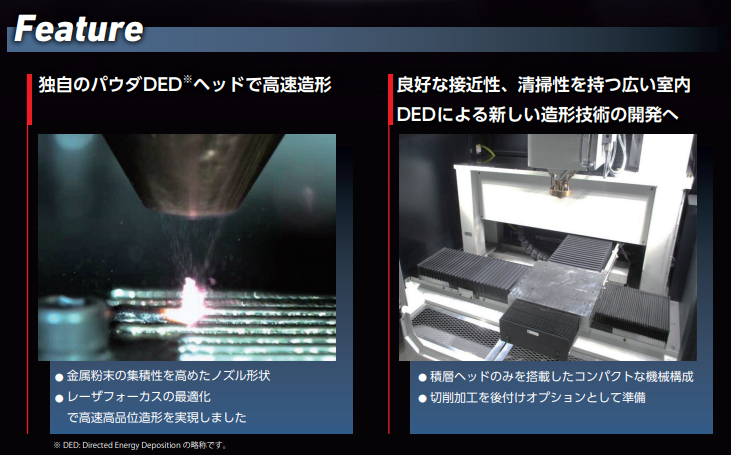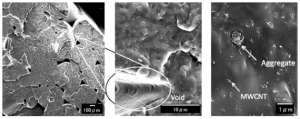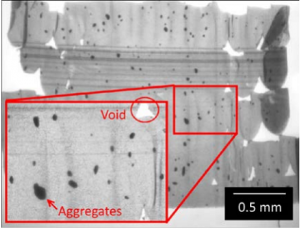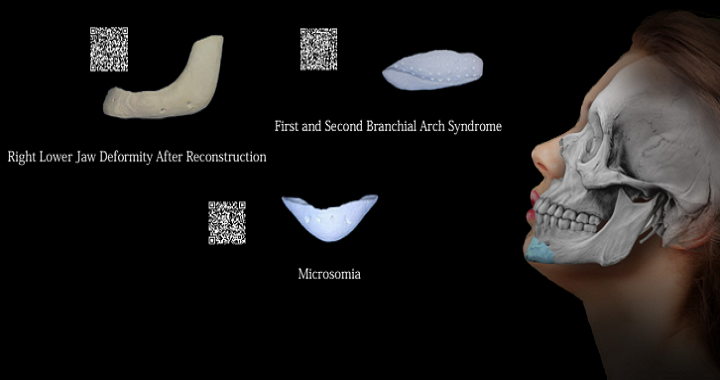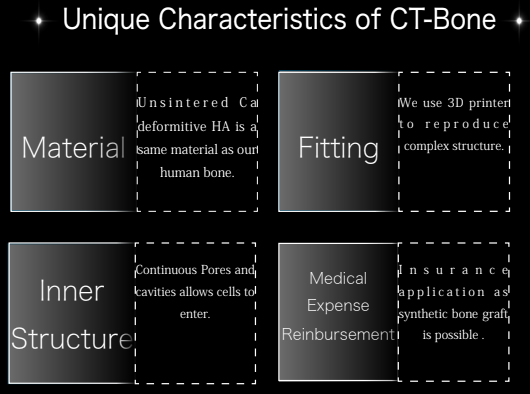Adding visual sophistication to any design, 3D printing has become an enabler for innovative artists and designers to creatively challenge traditional jewelry and accessories. To that end, the fashion industry has been working with the technology for many years, reducing time to market and costs, but mainly for developing pieces that would be extremely difficult to make any other way. The combination of symmetry, details, and designs available is endless, opening up an entirely different market for new companies. One of them is Septem, an online 3D-printed fashion platform that connects fashion designers, who already use 3D printing technology to develop their products, with a wide customer base, mainly in Japan. Septem has just added a new collection of 3D-printed modern jewelry to its growing product base, and it is showcasing the designs in its platform like artwork.
Focusing exclusively on fully 3D-printed designs, Akiko Ide, president and CEO of the Tokyo-based company FRev Co., created Septem. The company avoids any and all complicated trade procedures by 3D printing all the products it sells on a made-to-order basis in Japan, which translates to zero imports. Septem requires the designers to send their 3D printable design data instead of the manufactured product. Then it 3D prints the jewelry on-demand.
Using 3D printing technology to disrupt both the trade and fashion industry with build-to-order manufacturing is at the core of the company, as it seeks to revolutionize fashion. Furthermore, Septem avoids inventory, mass producing items, as well as mass disposal. This goes in line with the company’s desire to make sustainable jewelry and fashion products. By producing everything made to order, the amount of waste may be drastically reduced, leading to a balance between supply and demand. The result is a collaboration with an environment in peril due to long-term trends toward pollution, excessive water consumption and some of the worst carbon emissions from manufacturing.
Launched late last year, the platform already commercializes the work of five well-established designers from different corners of the world, including Australia, Italy, and Sweden, and has just announced a new collection to its growing portfolio.
The clean curved lines of Lada Legina‘s colored jewelry are a futuristic vision. They are vibrant, versatile, and striking and seem to be a perfect fit for the Japanese fashion platform that boasts its 3D-printed, bespoke designs. The California-based designer’s exclusive new Cosmogony collection of 3D-printed earrings, bracelets, and eyeglasses is the latest addition to Septem and can be purchased from the online platform for delivery not just in Japan, but anywhere in the world.
The brand new jewelry faithfully expresses Legina’s design concept of “preserving the heritage of handcrafting traditions by bringing them into the present.” She described her original inspiration as “spanning from the colors of nature over the patterns and embroidery of traditional Ukrainian costumes.” Although her designs are unmistakably modern, using 3D printing makes the jewelry pieces stand out due to the complex textures being manufactured.
A big part of Legina’s work in the United States involves 3D printing designs from organic, biodegradable, and recyclable materials, such as recycled coffee grounds or wild harvest algae, resulting in cost-effective and affordable jewelry without the environmental footprint of traditional fast fashion production—considered one of the major polluting industries in the world. However, in order to make the most of Legina’s delicate designs, Septem has changed the materials she usually works with and is 3D printing all of the new pieces using nylon and acrylic materials. Albeit, they have maintained and repeated the design process to realize its original form.
According to Septem, in the Cosmogony collection, Legina is exploring new design ideas and fusing traditional handwork with contemporary innovative techniques. Moreover, the company describes that, behind the glamorous, attention-demanding accessories, and dramatic glitter, lay deeper ideas about the evolution of jewelry design, fashion, aesthetics, and spiritual life.
Throughout its product line, Septem presents a sleek foundation for jewelry and accessories, allowing customers to select from a range of colors, eco-friendly materials, and prices. In the case of Legina’s new designs, they take on a variety of hues, like vivid reds and blues, starting at USD$97 (¥10,400). Her large earring designs are quite unique, distinguished, and are only worn in one ear. This includes exotic flower designs—like the Orchid Flower nylon earring—to perfectly fitting moon earrings that curve around the ear for a dramatic effect, and although there are just a few models to choose from, there are many colors available. The most expensive pieces of the collection include two versions of Legina’s UltraGlasses in nylon, priced at $267 and $315. They stand out due to the undulated multi-layered laces that make up the eyeglasses, enabling the user to peek into the world through complex web designs.
Legina’s work shares the online platform with architect Stefania Dinea’s wearable jewelry; industrial designer Marta Cherednik’s delicate pieces; as well as San Fransisco designer Betty Chang’s geometrically shaped handbags and accessories; Italian product designer Alberto Ghirardello’s aesthetically pleasing jewelry, and technical high-performance apparel designer Edward Harber’s sculptural high-end designs.
Although, currently, the platform sells work from known international designers with experience in 3D printing fashion, the company plans to increase the number of registered Asian designers in the future.
Experts have used 3D printing in fashion for almost 15 years to create modern, functional apparel and accessories, unlocking the commercial viability of the technology in the fashion industry. The versatility of 3D printing also means designers can save time cutting and joining pieces by 3D printing entire single designs at a time, eliminating some of the most time-consuming steps of the traditional jewelry-making process and drastically reducing costs, especially for low production volumes, leading the way for bespoke designs made with new and sustainable materials. The advantages of adopting 3D printing for producing jewelry and accessories are countless and we can surely expect more designers will find their way to 3D printed fashion online platforms like Septem in the near future.
The post Japan’s Septem Sells Fully 3D-Printed Jewelry and Accessories appeared first on 3DPrint.com | The Voice of 3D Printing / Additive Manufacturing.


